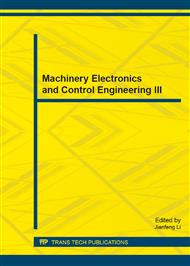p.11
p.15
p.19
p.22
p.26
p.31
p.36
p.40
p.44
The Study of the Architectural Beam Construction Cracks’ Condition on the Features of the Force-Electricity Functional Conversion Composite Materials
Abstract:
The technology monitoring the operating state of the architecture construction is always hot topics in civil engineering. In this paper, attempts using the NiTiSMA film/ferroelectric ceramics PZT composite materials with the function of force - electricity conversion are introduced to the design of structural safety monitoring system. The sensing materials based on the function of force - electricity conversion, directly perceive the stress changes of architectural structure under the vibration loads, monitoring the state changes of internal cracks in the architectural structure. The results show that the safety monitoring system of architectural beam structure,on the sense of NiTiSMA film / ferroelectric ceramics PZT composite materials, possesses reaction speed in milliseconds, response frequency at 0-1000 Hz. It is suitable for monitoring the damage status of cracks in the architecture construction.
Info:
Periodical:
Pages:
26-30
Citation:
Online since:
December 2013
Authors:
Keywords:
Price:
Сopyright:
© 2014 Trans Tech Publications Ltd. All Rights Reserved
Share:
Citation:


